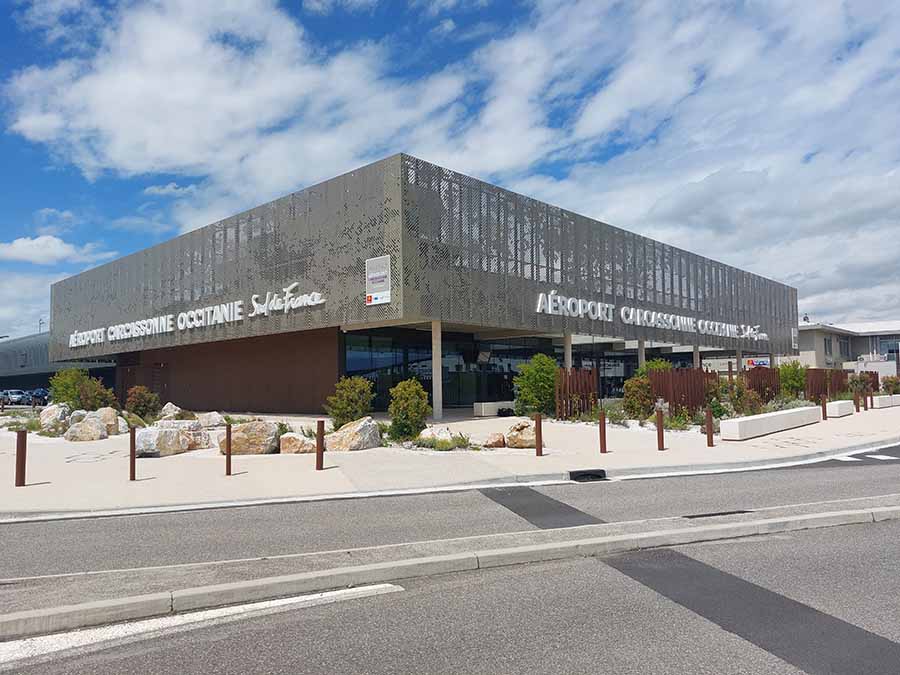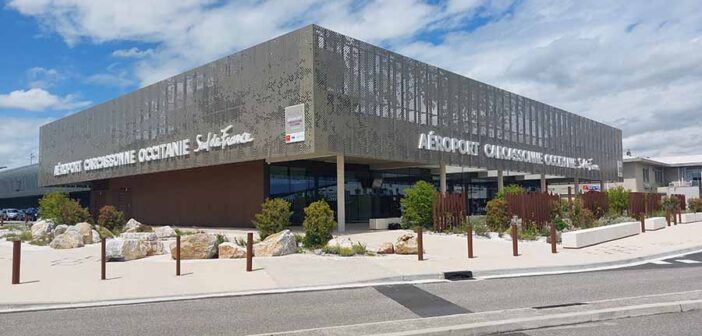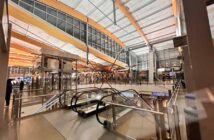
Carcassonne Airport, also known as Salvaza Airport, serves as a small but functional gateway to the Aude region in southern France, handling around 340,000 passengers in 2023. Located just 3 kilometres west of Carcassonne’s city centre, the airport connects travellers to destinations across Europe and Morocco, primarily through Ryanair, with flights to cities like Dublin, London Stansted, and Tangier. Its single terminal, recently upgraded with a €11 million renovation, provides a straightforward experience for those visiting the historic walled city and surrounding Languedoc region.
Accessing the airport is easy, with several transport options linking to Carcassonne. A shuttle bus, timed to coincide with flight arrivals and departures, connects the airport to the medieval Cité, Square Gambetta, and the railway station in about 10 minutes for €6, with children under seven travelling free. Tickets are purchased onboard, and the service integrates with the city’s public transport for an hour post-journey.
Taxis, stationed outside the arrivals hall, offer a quick 10-minute ride to the city centre for €12 to €15. Car rental agencies, including Avis, Europcar, and Hertz, are located across a dual carriageway, accessible via an underpass, though lift outages can complicate access. The airport’s 400-space car park offers 15 minutes free and €36 for a week. Passengers should arrive two hours before international flights and one hour before domestic ones to account for check-in and security.
The airport’s single-terminal layout is simple, with arrivals on the ground floor, departures on the first floor, and a restaurant on an upper level overlooking the runway. Featuring two departure gates and a modest check-in area, the terminal splits into Schengen and non-Schengen zones. Clear signage ensures quick navigation, with walking times under five minutes. Peak summer months, particularly April to October, can lead to overcrowding at security or passport control, with waits sometimes exceeding 40 minutes due to limited staffing or baggage drop inefficiencies. Baggage claim delays, occasionally caused by a single carousel, are another concern, so passengers should monitor updates via the airport’s website or Flightradar24.
Dining and retail options are limited but adequate for a small airport. The Salvaza restaurant and bar on the first floor serves hot and cold snacks, drinks, and meals, open from the first to last flight daily, with a coffee costing around €2. A single shop under an orange canvas awning offers local products like cassoulet, olive oil, and souvenirs, but no duty-free is available. Passengers must shop before check-in, as only a vending machine is airside. The lack of extensive dining and retail means planning meals or purchases in Carcassonne may be preferable, especially during busy periods.
Facilities cater to basic needs, with free Wi-Fi available, though registration can be cumbersome. Public payphones, ATMs, currency exchange, and baby-changing areas are present, but charging stations and padded seating are scarce. Accessibility is well-supported, with ramps, lifts, wheelchairs, and adapted toilets for passengers with mobility needs, bookable 48 hours in advance. Car hire desks and a tourist information counter are located in the arrivals area, but no luggage storage is available. Nearby hotels, like the Ibis Carcassonne Est, a 10-minute drive away, offer convenient stays. Smokers can use designated outdoor areas.
On-time performance is generally reliable, with the airport’s small scale minimising congestion. Delays are often linked to airline-specific issues, such as equipment problems, or weather conditions, particularly fog in autumn. Recent social media posts note occasional understaffing at passport control, causing waits of up to an hour, especially for non-Schengen flights. Passengers can check real-time updates via in-terminal displays. As a regional airport, Carcassonne focuses on direct flights, with no major connecting options. Transfers, when needed, are simplified by the single terminal, but passengers on separate tickets should verify luggage policies to avoid rechecking bags.
Carcassonne Airport’s compact design, recent upgrades, and proximity to the city make it a practical choice for travellers. While limited facilities and peak-season queues pose challenges, the airport’s transport links and essential amenities ensure a pleasant journey to the historic heart of southern France.




